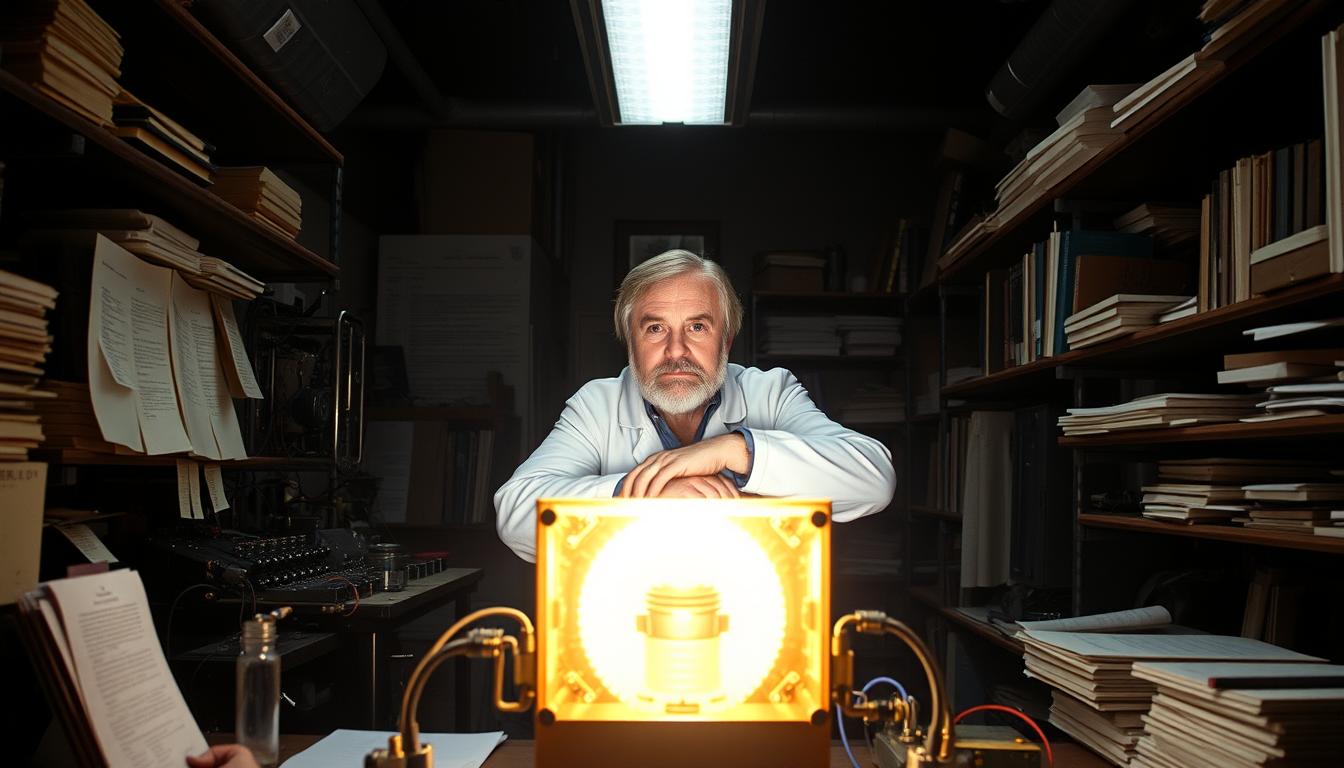Harold Puthoff is a pioneering scientist whose work spans quantum physics, energy research, and unconventional studies. Born in 1936, this Stanford-educated physicist has spent decades pushing boundaries in both mainstream and fringe science.
His 1967 Ph.D. thesis on tunable lasers laid the foundation for modern optics. Yet, Puthoff’s career took a fascinating turn when he began exploring paranormal phenomena alongside rigorous physics. This unique blend of expertise makes him one of the most intriguing figures in scientific research today.
Currently leading EarthTech International, he continues investigating advanced propulsion and energy concepts. His co-founding of To the Stars Academy further demonstrates his commitment to exploring unexplained phenomena through scientific rigor.
Key Takeaways
- Bridges mainstream physics and unconventional research
- Stanford Ph.D. with groundbreaking work in laser technology
- Current leader in advanced propulsion studies
- Blends academic credibility with open-minded exploration
- Pioneering figure in both peer-reviewed and controversial fields
Who Is Hal Puthoff? A Multidisciplinary Pioneer
A curious mind from childhood, Puthoff’s academic path blended engineering and groundbreaking physics. His journey began in Chicago, where early questions about energy and mechanics sparked a lifelong passion for science.

Early Life and Education
At the University of Florida, he earned degrees in electrical engineering, mastering practical applications of technology. This hands-on training later proved vital for his theoretical work. Key achievements included:
- Graduating with honors, showcasing his analytical prowess
- Developing a keen interest in lasers, foreshadowing his future research
From Electrical Engineering to Quantum Physics
Puthoff’s transition from engineering to quantum studies began at Stanford University. His 1969 textbook, co-authored with Richard Pantell, became a cornerstone in quantum electronics education. One colleague noted:
“His ability to bridge theory and experiment reshaped how we teach photonics.”
By the 1980s, he pioneered polarizable vacuum models, linking quantum fluctuations to inertia. This work, rooted in his Ph.D. research, laid groundwork for later propulsion theories.
Hal Puthoff’s Controversial Work in Parapsychology
Government-funded psychic experiments became a hallmark of Harold Puthoff’s controversial career. His leadership in the Stargate Project, a CIA-backed initiative, blurred lines between science and the unexplained. Over two decades, this research aimed to harness psychic abilities for espionage.

The Stargate Project and Remote Viewing Experiments
The Pentagon invested $20 million to test claims of psychic power. Puthoff’s team studied individuals like Uri Geller, who allegedly bent spoons with his mind. Critics later revealed Geller’s tricks relied on sleight of hand.
Remote viewing—perceiving distant locations mentally—was another focus. Though some results seemed promising, experiments often lacked strict controls. Sensory cueing and loose protocols cast doubt on findings.
Criticisms and Scientific Skepticism
Independent researchers failed to replicate Stargate’s results 35 times. Terence Hines, a noted skeptic, highlighted chaotic test conditions. He argued the power of suggestion skewed outcomes.
Puthoff’s ties to Scientology (he reached OT VII level) also raised questions. Some speculate this influenced his approach to paranormal research. Yet, his early work with lasers kept him grounded in mainstream science.
Despite flaws, Stargate pushed boundaries. It forced a debate on how order and rigor apply to fringe studies.
Contributions to Physics: Zero-Point Energy and Beyond
The quantum vacuum isn’t empty—it’s a buzzing sea of energy, and one researcher has spent decades unlocking its secrets. Their work bridges general relativity and quantum mechanics, challenging how we understand inertia and motion.

Theories on Vacuum Fluctuations and Inertia
In the 1990s, a radical theory proposed that inertia arises from interactions with the zero-point field. Co-developed with Bernhard Haisch, it suggested that particles “drag” against this quantum vacuum, creating resistance. Critics like Massimo Pigliucci argued it violated thermodynamics, but experiments with Casimir forces lent credibility.
The Casimir effect—where metal plates attract in a vacuum—hinted at harvestable energy. A 1993 paper explored capacitors tapping this force, though practical applications remain elusive.
Patents and Propulsion Research
A 1998 patent (US5845220) outlined a method for non-electromagnetic communication, sparking debate. Skeptics questioned its feasibility, but it underscored bold thinking about vacuum properties.
Today, research continues on warp drive metrics inspired by Alcubierre’s work. Collaborating with Eric W. Davis, EarthTech investigates bending spacetime for propulsion—a fusion of general relativity and speculative physics.
Conclusion: Hal Puthoff’s Legacy in Science and the Unexplained
Few scientists have bridged mainstream and fringe science as boldly as Harold Puthoff. His work spans peer-reviewed physics and controversial research, leaving lasting implications for both fields.
From founding the Institute for Advanced Studies to influencing space propulsion theories, he reshaped how we explore the unknown. Yet, his dual focus on quantum optics and paranormal studies sparks debate about balancing order and open-minded inquiry.
Proteges like Eric W. Davis continue his work, proving his ideas endure. Whether studying zero-point energy or UFOs, Puthoff’s legacy challenges us to rethink the boundaries of science.

